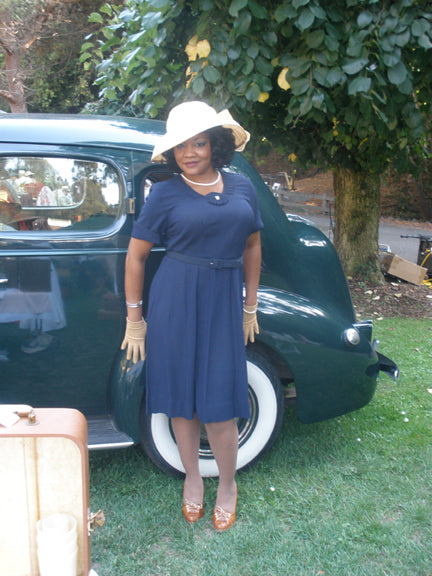
The original instructions advise closing the Loop seam and then narrow hemming both Loop edges by hand. However, I narrowed hemmed these edges (by machine, but one could narrow hem at this point by hand as well) and then stitched the Loop closed:




The completed loop (this instruction is also applied to the loop for pattern E30-6719):

If one wishes for more structure to make the top part of the loop more stable, I recommend inserting 1/8" dowels cut to length into the fabric (at the back of the loop) between the top-most pleats.


















